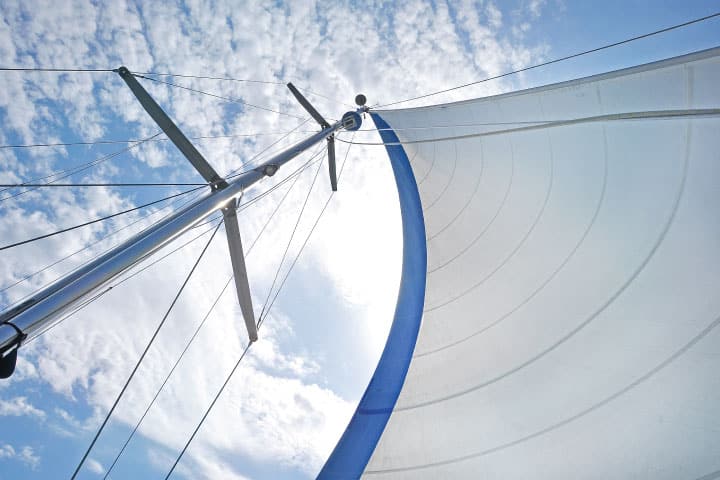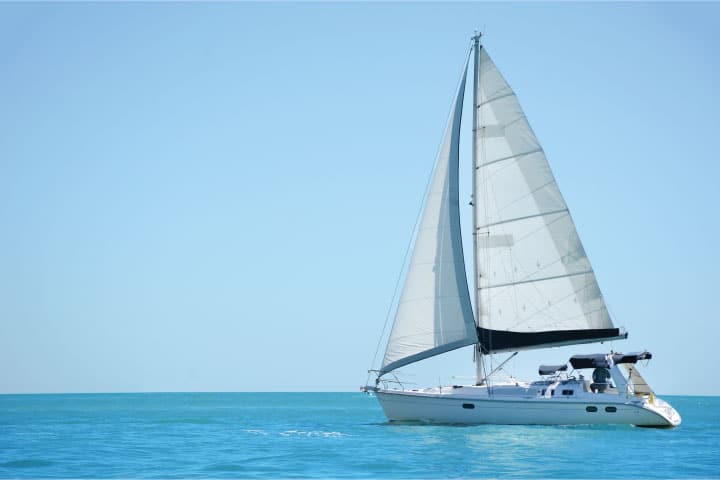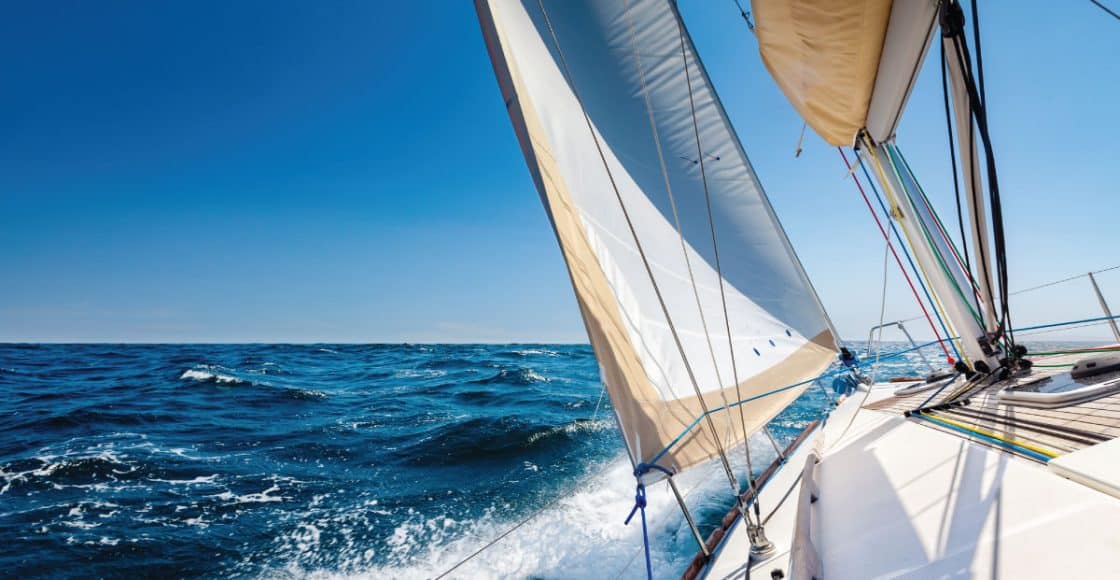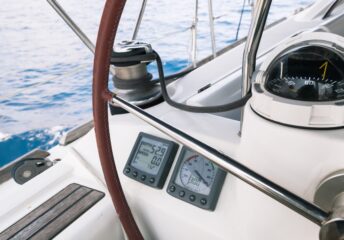How Sails Work: Understanding the Basics
Last Updated on September 1, 2023 by Boatsetter Team
Sailing is all about physics and geometry but don’t worry, it’s not too hard to learn. Once the theory is down, it’s all a matter of practice. Let’s look at what sails are and how they work.
Book a sailboat rental & set out on your next expedition
Aerodynamics, hydrodynamics & modern sails
Sails work like airplane wings, except they’re vertical rather than horizontal. As the wind hits the front of a curved sail, it splits, passing on both the downwind (leeward) side and upwind (windward) side.
The leeward wind travels farther due to the curvature of the sail and creates a low-pressure area while the windward wind travels a shorter distance and reaches the aft end faster – together, they create aerodynamic lift that “pulls” the boat forward.
The keel or centerboard in the water below the hull prevents the boat from being pushed sideways. With the lift of the sails and the lateral push or hydrodynamics of the keel, the boat is propelled forward. Where the wind concentrates force in the sails is called the center of effort, while the keel below is called the center of lateral resistance.
Most modern sailboats have a forward (or headsail) and a mainsail. The headsail may be called a genoa, jib, or staysail (different sizes) and is attached at the top of the mast and leads down at an angle to the bow. It’s controlled by lines called sheets. The mainsail is supported by the mast and is attached at the bottom to a lateral spar called the boom.

Parts of a sail
Sails come in various shapes, but for our purposes, we will focus on modern, triangular sails. The top of the sail is called the head, and the bottom is the foot. The forward end of the foot is the tack, and the aft end is the clew. The forward edge of the sail is the luff, and the aft end is the leach.
Telltales or short strands of yarn are often attached near the leading edge of a sail to help with sail trim. The shape of the sail is ideal when the strands on both sides are streaming back at the same level, which indicates that wind is moving evenly along both sides of the sail.
READ MORE: Parts of a Sailboat
Points of sail
A boat cannot sail directly into the wind– instead, it sails at an angle to the true breeze. Close hauled is roughly 45 degrees off the wind, close reach is 60 degrees, beam reach is at 90 degrees, and a broad reach is approximately 150 degrees off the wind.
When moving directly or dead downwind, a boat is said to be running, and when the bow is pointed into the wind, that’s called being in irons. A boat cannot sail in irons and can be hard to control when running. When sails begin to luff at the leading edge, the boat is trying to sail too close to the wind and will stall.

Tacking and jibing (gybing)
A boat changes direction by either tacking or jibing. Sailing upwind, a boat tacks when the bow passes through the eye of the wind until the boat is sailing on the opposite side or “tack” creating a zig-zag course. When sailing downwind, the boat jibes when passing the stern through the wind.
Turning upwind is called heading up and turning away, or downwind is falling off. When the wind passes over the starboard rail first, you’re on a starboard tack and vice versa.
Pro Tip: You can learn how to sail without owning a sailboat. Find a sailboat rental near you, then book! You can save that boat listing and book again to continue practicing.
Sail shape & angle
Boats sail in true wind (the wind that is actually blowing at a given speed and angle) by they’re actually responding to the apparent wind (the angle and speed of the breeze that is felt once the boat is moving). The wind always changes speed and angle, so sails must be adjusted or trimmed in response to the boat to maintain optimal speed.
When sailing upwind, the sails are sheeted in (made flatter by pulling in the sheet lines) to create better foils and greater lift or pull. When sailing downwind, sails are usually loosened or let out to create a “belly” and adjusted to be as perpendicular to the angle of the wind as possible.
Sheeting in (bringing the sails closer to the centerline) enables the boat to point higher (sail closer to the true wind) while easing out (loosening the aft end of the sail) creates more power when the wind is aft like around the beam or broad reach.
A boat is more likely to heel when sheeted in and sailing upwind. Excessive healing doesn’t mean the boat is traveling faster. In fact, it may just be getting overpowered and becoming less efficient than if the sails were trimmed properly.

Reefing
In high winds, shorten or reef sails so the boat doesn’t become overpowered and potentially dangerous. Reefing is done at the tack and clue or the forward and aft parts of the foot of the sail. There may be 1-3 pre-rigged reefing points controlled by reefing lines, so the sails can be made as small as necessary to keep the boat from heeling too far.
Easy to learn
Trimming sails takes time to master; let sails out until they luff or flap, and then sheet in until you feel the boat pick up speed. Smaller boats react quickly to each adjustment and are better for new sailors to learn on than large boats that take a minute to speed up or slow down. Once you’ve mastered the theory, you may spend years perfecting your sailing skills.
About us
Boatsetter is a unique boat-sharing platform that gives everyone— whether you own a boat or you’re just renting — the chance to experience life on the water. You can list a boat, book a boat, or make money as a captain.
List. Rent. Earn— Only at Boatsetter

Zuzana Prochazka is an award-winning freelance journalist and photographer with regular contributions to more than a dozen sailing and powerboating magazines and online publications including Southern Boating, SEA, Latitudes & Attitudes and SAIL. She is SAIL magazines Charter Editor and the Executive Director of Boating Writers International. Zuzana serves as judge for SAIL’s Best Boats awards and for Europe’s Best of Boats in Berlin.
A USCG 100 Ton Master, Zuzana founded and manages a flotilla charter organization called Zescapes that takes guests adventure sailing at destinations worldwide.
Zuzana has lived in Europe, Africa and the United States and has traveled extensively in South America, the islands of the South Pacific and Mexico.










